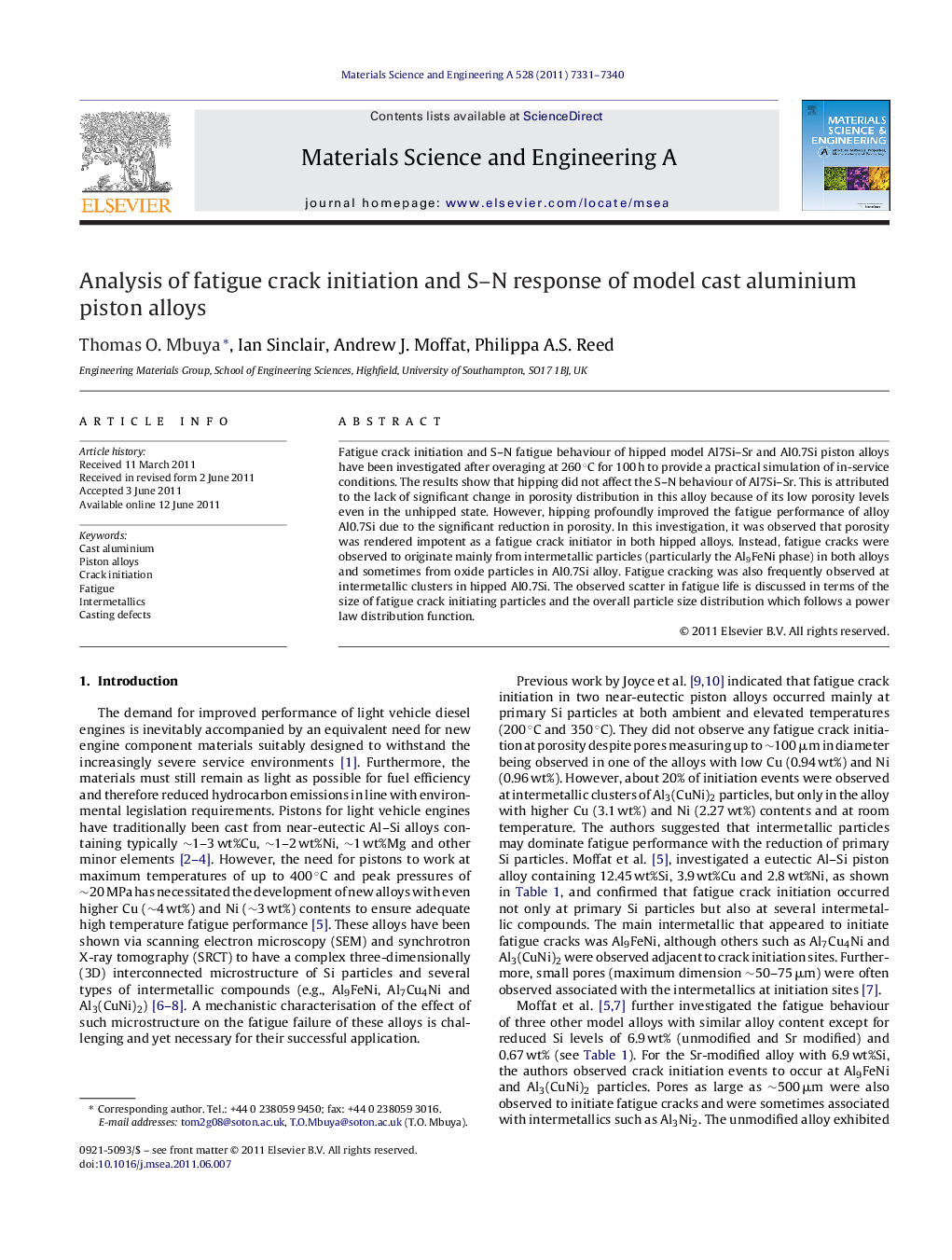| Article ID | Journal | Published Year | Pages | File Type |
|---|---|---|---|---|
| 1578431 | Materials Science and Engineering: A | 2011 | 10 Pages |
Fatigue crack initiation and S–N fatigue behaviour of hipped model Al7Si–Sr and Al0.7Si piston alloys have been investigated after overaging at 260 °C for 100 h to provide a practical simulation of in-service conditions. The results show that hipping did not affect the S–N behaviour of Al7Si–Sr. This is attributed to the lack of significant change in porosity distribution in this alloy because of its low porosity levels even in the unhipped state. However, hipping profoundly improved the fatigue performance of alloy Al0.7Si due to the significant reduction in porosity. In this investigation, it was observed that porosity was rendered impotent as a fatigue crack initiator in both hipped alloys. Instead, fatigue cracks were observed to originate mainly from intermetallic particles (particularly the Al9FeNi phase) in both alloys and sometimes from oxide particles in Al0.7Si alloy. Fatigue cracking was also frequently observed at intermetallic clusters in hipped Al0.7Si. The observed scatter in fatigue life is discussed in terms of the size of fatigue crack initiating particles and the overall particle size distribution which follows a power law distribution function.
► Hipping improves fatigue performance of a low Si (Al0.7Si) piston alloy but has no effect in a higher Si (Al7Si–Sr) alloy. ► Fatigue cracks initiate at intermetallic particles (e.g., Al9FeNi) in both hipped alloys and sometimes from oxide particles in Al0.7Si alloy. ► Scatter in fatigue life is correlated with the size of fatigue crack initiating particles and the overall particle size distribution.
